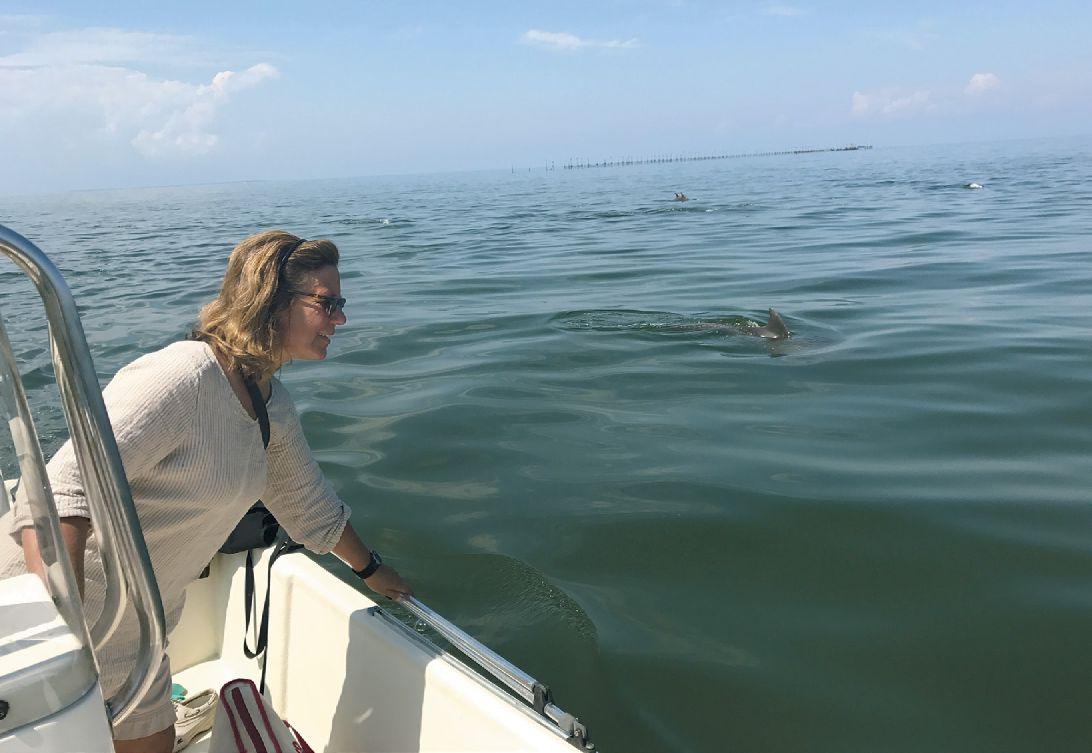
1 minute read
Scientists Mark First Evidence That Dolphins Give Birth in the Potomac
The first evidence that the Potomac River is a breeding area for wild bottlenose dolphins has been gathered by graduate students working with Georgetown biologist and dolphin expert Janet Mann.
The evidence was gathered as part of the Potomac-Chesapeake Dolphin Project (PCDP), initiated by Mann nearly five years ago to conduct the first-ever study of dolphins in the Potomac. Mann created the project after studying bottlenose dolphins in Shark Bay, Australia, for more than three decades.
Advertisement
“I have spent 32 years studying wild bottlenose dolphins—logging tens of thousands of hours observing them, particularly mothers and calves,” Mann says. “Yet I have never seen a birth or even evidence of a recent birth. This recent sighting is really exciting.”
While bottlenose dolphins are the most-studied species worldwide, she says there has been only one other documented birth, in 2013 off the coast of Georgia.
Two graduate students—Ann-Marie Jacoby (C’13) and Melissa Collier (G’23)—were following a group of about 50 dolphins in the Potomac River near Lewisetta, Virginia, when Jacoby noticed a cloud of blood; shortly afterward a small calf with a “slightly bent and wobbly fin” surfaced and then swam alongside its mother. At birth, the calves’ fins, which straighten out within a few hours, are completely flopped over to one side.
“At first, I was very alarmed by the cloud of blood, but there were no apparent signs of injury or predation—the dolphins were just traveling down the river,” says Jacoby, who has worked with Mann since her undergraduate years at Georgetown. “I ran through the possible reasons for the blood and told my team to look out for an extremely small newborn.
“To me, it’s the most compelling evidence we have to date that dolphins are coming into the Potomac River to give birth, which is amazing,” she adds.
Collier, a graduate student in Georgetown’s biology department, also witnessed the birth. “There’s something really special about being one of the few researchers studying this unique and understudied group of dolphins, and I’m excited to continue working with them for my dissertation work,” she says.
“We have been trying to understand why dolphins come into the Potomac River and the Chesapeake Bay,” Mann says. “We see some very young calves and we see lots of mating behavior, but this is the most definitive evidence we have that they have their calves here.
“It is thought that these animals are from multiple populations because dolphins seen in the Potomac River have also been sighted off of North Carolina and New Jersey,” Mann says, “and some groups have population-specific characteristics not shared by other groups of dolphins.”










